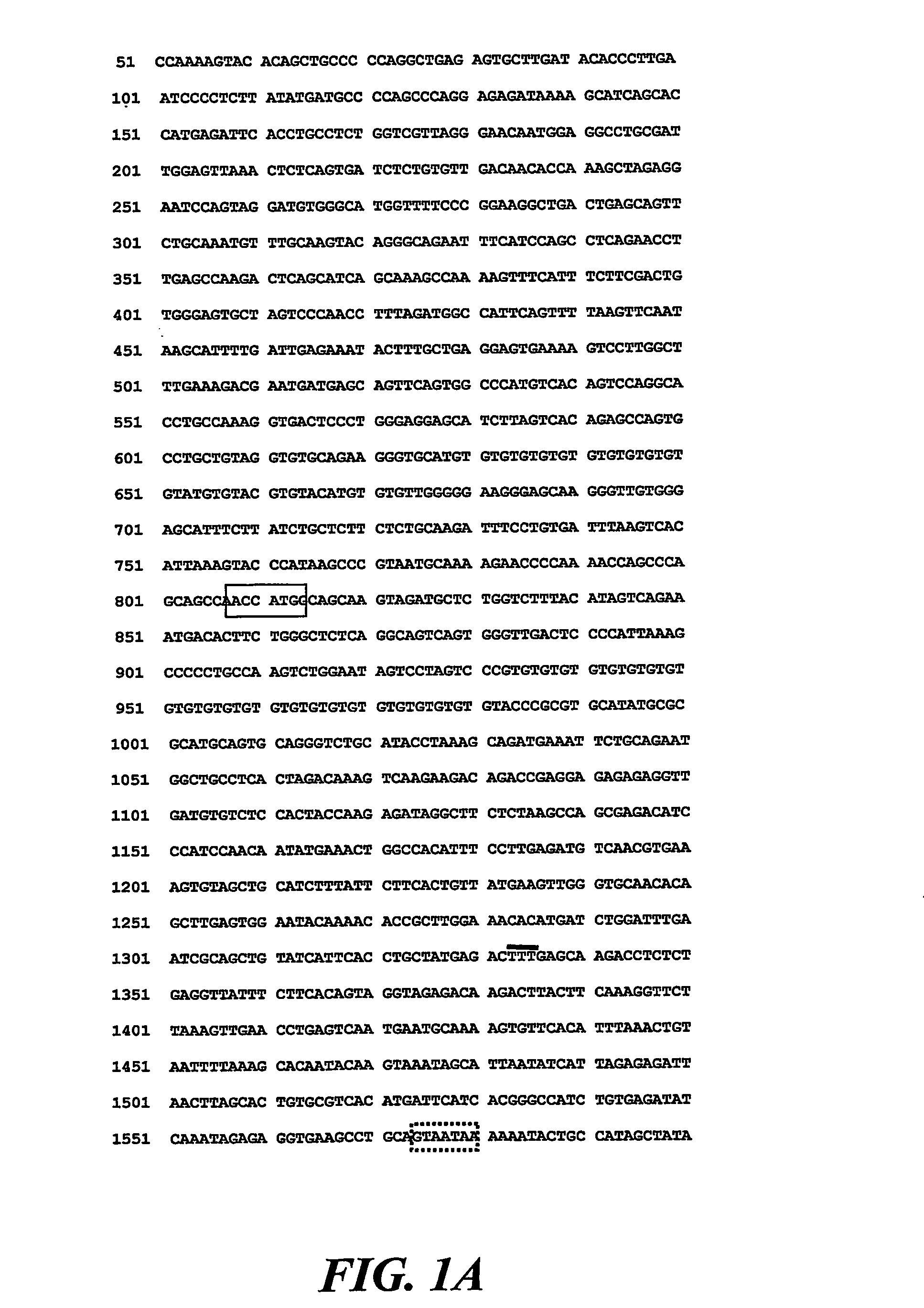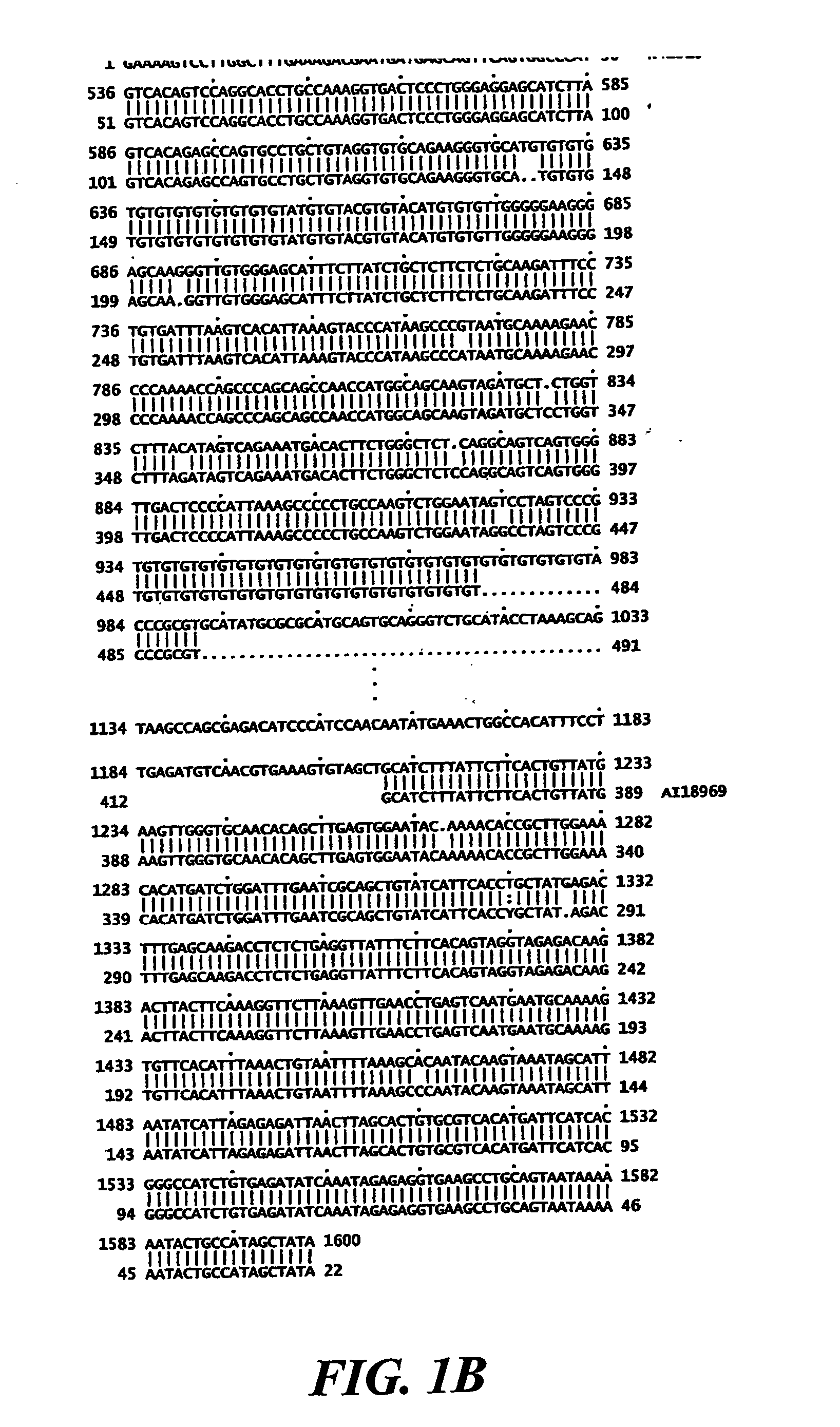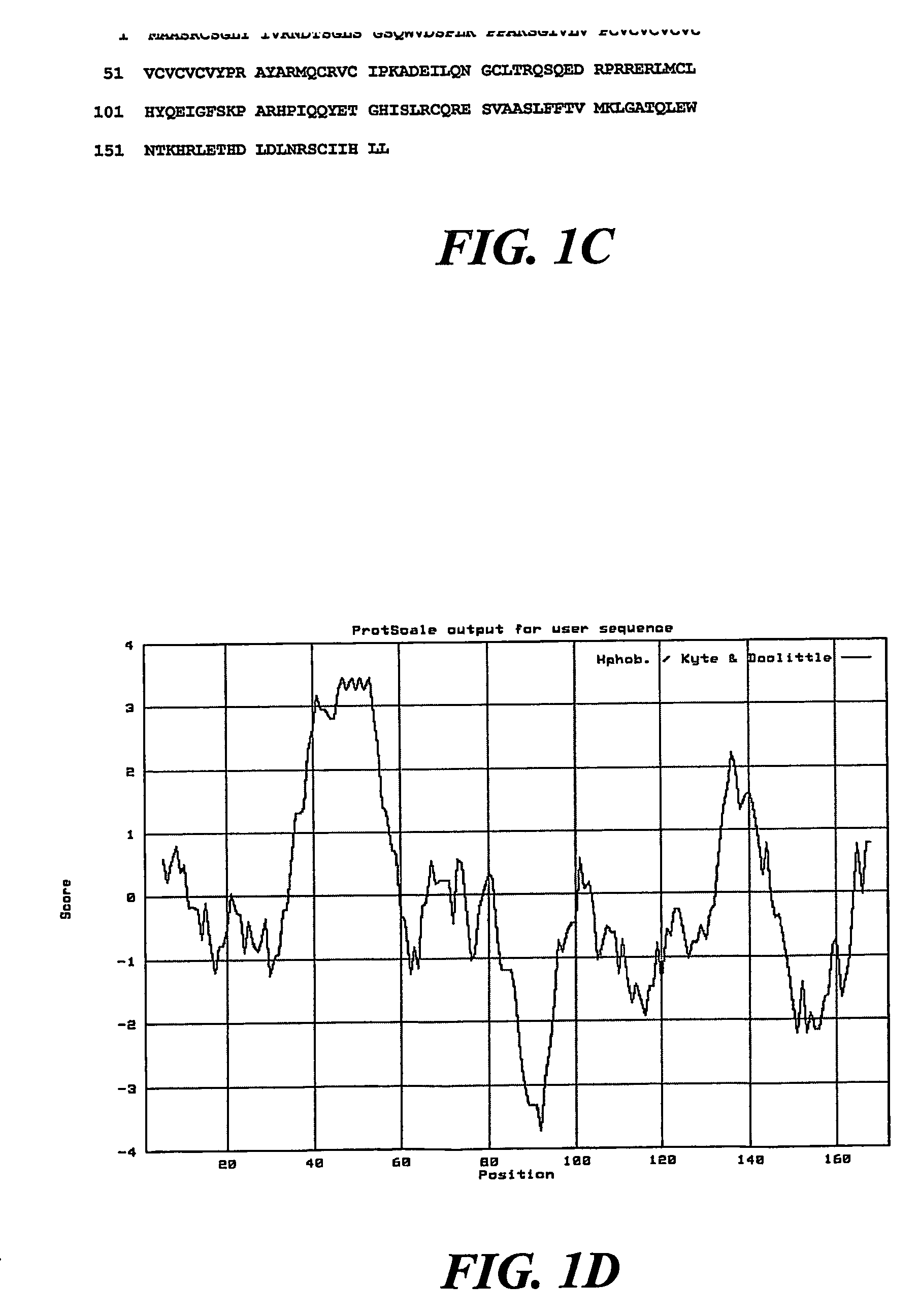Mammalian migration inducting gene and methods for detection and inhibition of migrating tumor cells
- Summary
- Abstract
- Description
- Claims
- Application Information
AI Technical Summary
Benefits of technology
Problems solved by technology
Method used
Image
Examples
example 1
HGF and Ligation of αvβ5 Integrin Induce a Novel, Cancer Cell-Specific Gene Expression Required for Cell Migration
[0157] Hepatocyte growth factor (HGF), a cytokine involved in tumorigenesis and most metastases, initiates cell migration by binding to the protooncogene c-Met receptor. In epithelial carcinoma cells, c-Met activation causes the breakdown of E-cadherin cell-cell contacts leading to cell spreading. While the breakdown of E-cadherin contacts is immediate, HGF-induced migration requires transcription. To test the hypothesis that this de novo mRNA synthesis includes cancer cell-specific transcripts, subtraction hybridization was performed to isolate HGF-induced transcripts from an endometrial epithelial carcinoma cell line, RL95-2 (RL95), known to migrate but not to proliferate with HGF treatment. Mig-7 cDNA is induced by HGF in endometrial epithelial carcinoma cell lines RL95 and HEC-1A before migration ensues. Ovarian, oral squamous cell, and colon metastatic tumors but n...
example 2
Cell Culture and Reagents
[0159] Human cell lines were used. The endometrial carcinoma cell line, RL952 (ATCC), was cultured in DMEM:Ham's F12 (1:1) media (Gibco) supplemented with 10 mM HEPES (Sigma), 0.005 mg / ml insulin (Sigma), 2.0 g / L NaHCO3, and 10% FCS at 37° C., 5% CO2. Because cancer cells can lay down and modify ECM differently than do normal cells (Emoto et al., “Annexin II Overexpression Correlates with Stromal Tenascin-C Overexpression: A Prognostic Marker in Colorectal Carcinoma,”Cancer 92:1419-1426 (2001); Euer et al., “Identification of Genes Associated with Metastasis of Mammary Carcinoma in Metastatic Versus Non-Metastatic Cell Lines,”Anticancer Research 22:733-740 (2002); Matsuyama et al., “Comparison of Matrix Metalloproteinase Expression Between Primary Tumors With or Without Liver Metastasis in Pancreatic and Colorectal Carcinomas,”Journal of Surgical Oncology 80:105-110 (2002), which are hereby incorporated by reference in their entirety), the cells were plated...
example 3
Primary Endometrial Epithelial Cell Isolation
[0160] Under IRB approval, normal endometrial tissue (functionalis region) was obtained from three individuals undergoing hysterectomy for reasons other than cancer. Primary endometrial epithelial cells were isolated as previously described (Classen-Linke et al., “Establishment of a Human Endometrial Cell Culture System and Characterization of its Polarized Hormone Responsive Epithelial Cells,”Cell Tissue Research 287:171-185 (1997), which is hereby incorporated by reference in its entirety). Briefly, sections of normal functionalis were immediately placed in ice-cold DMEM:F12 media with 10% FCS, minced with sterile scissors under sterile conditions and treated with 0.46% Type I collagenase A (125 U / mg, Sigma), 1% penicillin / streptomycin (Gibco BRL) and incubated for one hour at 37° C. in a shaking water bath. Stromal cells were separated from glandular epithelium by filtration with a 250 μm sterile mesh followed by a second filtration t...
PUM
| Property | Measurement | Unit |
|---|---|---|
| Temperature | aaaaa | aaaaa |
| Temperature | aaaaa | aaaaa |
| Temperature | aaaaa | aaaaa |
Abstract
Description
Claims
Application Information
 Login to View More
Login to View More - R&D
- Intellectual Property
- Life Sciences
- Materials
- Tech Scout
- Unparalleled Data Quality
- Higher Quality Content
- 60% Fewer Hallucinations
Browse by: Latest US Patents, China's latest patents, Technical Efficacy Thesaurus, Application Domain, Technology Topic, Popular Technical Reports.
© 2025 PatSnap. All rights reserved.Legal|Privacy policy|Modern Slavery Act Transparency Statement|Sitemap|About US| Contact US: help@patsnap.com



